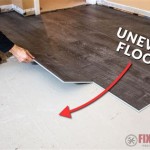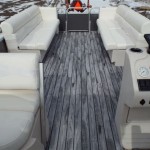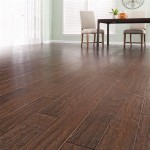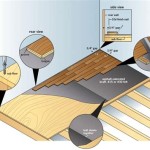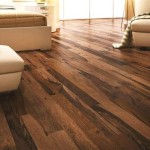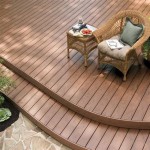Hotel Room Flooring Designs: Balancing Aesthetics, Durability, and Practicality
Hotel room flooring plays a crucial role in shaping the guest experience. More than just a surface to walk on, flooring contributes significantly to the overall aesthetic, ambiance, and perceived cleanliness of a hotel room. Careful consideration must be given to the design, material, and installation process to ensure the flooring meets the demands of high traffic, potential spills, and varying guest preferences.
Selecting the right flooring for a hotel room involves a multifaceted approach, considering factors such as durability, ease of maintenance, noise reduction, cost, and aesthetic appeal. The chosen flooring should seamlessly integrate with the overall design scheme and contribute to a comfortable and inviting atmosphere for guests. Furthermore, compliance with safety regulations and accessibility standards is paramount.
Durability and Longevity: Withstanding the Rigors of Hotel Traffic
Hotel rooms experience a high volume of foot traffic, making durability a primary concern when selecting flooring. The chosen material must be able to withstand constant wear and tear, resist indentation from luggage and furniture, and maintain its appearance over time. Flooring options known for their durability include commercial-grade carpets, luxury vinyl tile (LVT), and certain types of hardwood and engineered wood.
Commercial-grade carpets are specifically designed to withstand heavy traffic and resist staining. They often feature dense fibers and a tight weave, making them more resilient than residential carpets. LVT is another durable option, offering excellent resistance to scratches, stains, and water damage. It is also relatively easy to clean and maintain, making it a popular choice for high-traffic areas. Hardwood and engineered wood can also be suitable options, but they require proper sealing and maintenance to prevent damage from moisture and scratches. Choosing materials with high wear ratings is critical in ensuring the longevity of the flooring investment and minimizing the need for frequent replacements.
The substrate beneath the flooring also plays a crucial role in its durability. A properly prepared and leveled subfloor provides a stable foundation, preventing premature wear and tear. Utilizing appropriate underlayment materials can also enhance the flooring's resilience and improve sound insulation.
Aesthetics and Ambiance: Creating a Welcoming Guest Experience
The aesthetic appeal of hotel room flooring significantly impacts the overall guest experience. The flooring should complement the room's design scheme, color palette, and furniture, creating a cohesive and visually pleasing environment. The choice of flooring can contribute to the desired ambiance, whether it's a modern and minimalist aesthetic or a more traditional and luxurious atmosphere.
Carpet offers a wide range of colors, patterns, and textures, allowing for extensive design flexibility. It can create a warm and inviting atmosphere, while also providing sound insulation and cushioning underfoot. LVT is available in a variety of styles that mimic the look of natural materials, such as wood, stone, and tile. This allows for the creation of sophisticated and elegant designs without the high cost and maintenance requirements of real materials. Hardwood and engineered wood offer a classic and timeless aesthetic, adding warmth and character to a room. The choice of wood species, stain, and finish can further customize the look to match the desired design style.
The layout and pattern of the flooring can also impact the perceived size and shape of the room. For example, running planks of wood or LVT lengthwise can create the illusion of a longer space, while using a diagonal pattern can add visual interest and expand the perceived width. The use of area rugs can also define specific zones within the room, such as the sleeping area or the seating area, adding texture and visual appeal.
Maintenance and Cleaning: Streamlining Housekeeping Operations
Ease of maintenance and cleaning is a critical factor to consider when selecting hotel room flooring. Given the high turnover of guests and the need for efficient housekeeping operations, the chosen flooring should be easy to clean, stain-resistant, and require minimal upkeep. Regular cleaning protocols should be established to maintain the flooring's appearance and hygiene.
Carpet requires regular vacuuming to remove dirt and debris. Periodic deep cleaning with professional equipment is also necessary to remove stains and maintain its appearance. LVT is relatively easy to clean with a damp mop and mild detergent. It is also resistant to stains and water damage, making it a low-maintenance option. Hardwood and engineered wood require regular sweeping or vacuuming to remove dust and dirt. They should also be cleaned with a wood-specific cleaner to prevent damage to the finish. It is important to avoid using excessive water when cleaning wood floors, as this can cause warping or damage.
The color and pattern of the flooring can also impact its perceived cleanliness. Dark colors and busy patterns can help to conceal dirt and stains, while lighter colors and solid patterns may require more frequent cleaning. Implementing a preventative maintenance program, such as using entrance mats to trap dirt and debris, can also help to reduce the frequency of cleaning and extend the lifespan of the flooring.
Cost Considerations: Balancing Budget and Value
The cost of hotel room flooring is a significant factor in the selection process. The initial cost of materials and installation should be weighed against the long-term cost of maintenance, cleaning, and potential replacement. It is important to consider the lifecycle cost of the flooring when making a decision, rather than focusing solely on the upfront price.
Carpet is generally a more affordable option than hardwood or engineered wood. However, the cost can vary depending on the quality of the carpet and the complexity of the installation. LVT offers a mid-range price point, providing a balance between cost and performance. Hardwood and engineered wood are typically the most expensive options, but they can add significant value and appeal to a hotel room. The cost of installation can also vary depending on the complexity of the project and the skill of the installer. It is important to obtain multiple quotes and compare pricing from different vendors before making a decision.
The long-term cost of maintenance and cleaning should also be considered. Flooring that requires frequent cleaning or specialized maintenance can add to the overall cost of ownership. Choosing durable and stain-resistant materials can help to reduce maintenance costs and extend the lifespan of the flooring.
Noise Reduction: Enhancing Guest Comfort and Privacy
Noise reduction is an important consideration in hotel room flooring, as it can significantly impact guest comfort and privacy. Flooring can contribute to sound transmission between rooms, both airborne noise and impact noise. Choosing flooring materials with sound-dampening properties can help to minimize noise levels and create a more peaceful environment for guests.
Carpet is an excellent choice for sound absorption, as it effectively dampens both airborne and impact noise. The thickness and density of the carpet fibers contribute to its sound-dampening properties. LVT can also provide some sound insulation, especially when installed with an underlayment. The underlayment absorbs impact noise and reduces the transmission of sound to adjacent rooms. Hardwood and engineered wood can transmit more noise than carpet or LVT, especially if installed directly on a concrete subfloor. Using an underlayment can help to improve the sound insulation properties of wood flooring.
The choice of underlayment is critical for maximizing noise reduction. Different types of underlayment offer varying degrees of sound insulation. Acoustic underlayments are specifically designed to absorb sound and reduce noise transmission. These underlayments are often made from materials such as recycled rubber or cork. The use of sound-dampening materials in the flooring can significantly improve the guest experience and reduce noise complaints.
Accessibility and Safety: Meeting Regulatory Requirements and Protecting Guests
Hotel room flooring must comply with accessibility standards and safety regulations to ensure the safety and comfort of all guests, including those with disabilities. Flooring should be slip-resistant, even when wet, to prevent falls. It should also be free of tripping hazards and provide a smooth and stable surface for wheelchairs and other mobility devices.
Carpet should have a low pile height to allow for easy maneuverability of wheelchairs and other mobility devices. The carpet should also be securely installed to prevent it from bunching or creating tripping hazards. LVT is generally slip-resistant and provides a smooth and stable surface. However, it is important to choose an LVT product with a slip-resistant rating that meets or exceeds the required standards. Hardwood and engineered wood can be slippery, especially when wet. Using a textured finish or applying a slip-resistant coating can help to improve traction and prevent falls.
The transition between different flooring types should be seamless to prevent tripping hazards. Thresholds should be flush with the surrounding flooring to provide a smooth transition. It is also important to ensure that the flooring meets fire safety standards. Choosing flooring materials that are fire-resistant or fire-retardant can help to minimize the risk of fire and protect guests in the event of an emergency.

40 Spectacular Floor Design Ideas Bored Art Hotel Room Bedroom Interior

The Best Hotel Flooring Cork Icork Floor

What Is The Best Floor Type For Hotel Rooms L Antic Colonial

Hotel Room Layout Examples

Spa Tiles And Hotel Flooring Materials Kronos Ceramiche Floor Coverings In Porcelain Stoneware

Polished Concrete Floors In Hotels Resorts Craftsman

40 Spectacular Floor Design Ideas Bored Art Corridor Hallway Designs

Interior Design In Hotels Comprehensive Designs By The Porcelanosa Group

Industry Insight Best Hotel Flooring Options Designs

Hotel Design Today S Popular Hospitality Flooring Trends Cfic

